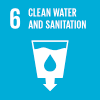Spig
Environmental Thesis
Power generation and industrial applications are the #2 user of water in the world after agriculture. Cooling systems provided by SPIG, because of their closed-loop architecture, drive water efficiency because minimize the withdrawal of water from the environment for industrial cooling purposes. Cooling towers (wet systems) reduce the use of water by 95% vs. an open-loop cooling system, while air-cooled condensers and air coolers (dry systems) reduce the use of water by 100% as they use air instead of water for cooling and condensing purposes.
Business
SPIG is a leading engineering and contracting company which operates globally in the closed loop industrial cooling systems sector, which includes cooling towers (wet cooling) and air-cooled condensers and air coolers (dry cooling). SPIG’s cooling systems are installed in power plants, refineries, petrochemical plants and other industrial plants where cooling is critical.
Founded in 1936 by the grandparents of the current Mosiewicz shareholders, SPIG has grown from a local family business to one of the international leaders in the industrial cooling systems sector. SPIG is headquartered in Italy and has operating subsidiaries in Germany, Turkey, Russia, Dubai, United States, Brazil, India, China and Korea. Approximately 90% of the group revenues are generated outside Italy.
Ambienta invested in SPIG in June 2010 and divested in July 2016 through a trade sale to the US listed company Babcock and Wilcox.
Environmental Impact
Ambienta only invests in businesses which have a positive impact on the environment through either, or both, a Resource Efficiency or Pollution Control contribution. Our proprietary methodology, the Environmental Impact Analysis, allow us to measure the contribution of different businesses to sustainability in terms of Resource Efficiency and Pollution Control which we capture through 11 Environmental Metrics.
For each portfolio company we report its impact in relation to our metrics.
Resource Efficiency
Spig’s contribution to Resource Efficiency is summarized by the following Environmental Metrics and SDGs:

Water Saved
Sustainable Development Goals
Our Methodology and Metrics are fully aligned with the UN Sustainable Development Goals adopted in 2015. Through our investment scope definition that focuses on products and services that improve Resource Efficiency and Pollution Control we fully capture 10 of the 17 Goals and their respective sub-goals.
For each portfolio company we report its impact in relation to the SDGs.


